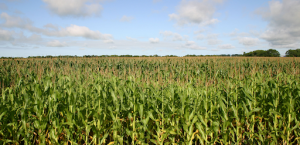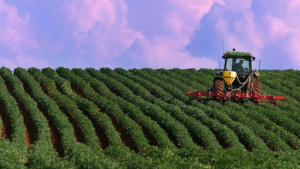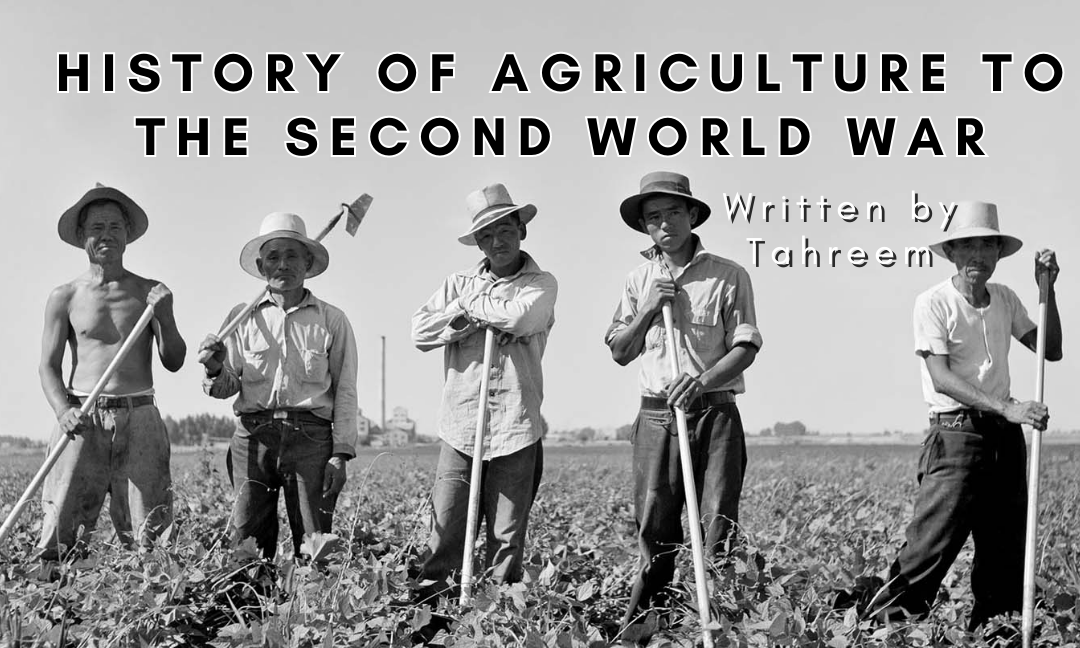Written By: Tahreem
Edited By: Kiritika Rana
Designed By: Cece Ndwia
Published By: Rayna Almas
Indigenous Practices
Before Europeans arrived, Aboriginal people in the lower Great Lakes and St. Lawrence regions established two types of grains: squash, and beans, and practiced seed selection. Long before French traders arrived, agricultural First Nations traded grain products for skins and meat obtained from woodland hunters. Following the introduction of the fur trade, Algonquian middlemen traded grains with distant groups for prime northern pelts and then traded furs with the French. Until the late 18th century, First Nations agriculture was important in supplying the fur trade.

Maritimes
18th century to mid-19th century
Maritime agriculture dates back to the French establishment of Port-Royal in 1605. Acadian settlers dug saltwater marshes in the Annapolis region to grow wheat, flax, vegetables, and pasture. Before the 1750s, there were few Acadians on Île St-Jean. By the mid-century, the Île Royale’s predominantly fishing population was cultivating small clearings with wheat and vegetables and had a variety of livestock. Agriculture was dominant in PEI between 1783 and 1850, but it was inferior to the cod fishery and secondary to the timber trade and shipbuilding in New Brunswick. With the British and the loyalists immigration, agricultural settlement in the Maritimes expanded from the marshlands to the riverbanks, particularly the Saint John. Despite the fact that the new areas were well-suited to growing grains, settlers preferred mixed farming for cultural, agricultural, and marketing reasons. The majority of full-time farmers focused on livestock raising, which required less labor than grain cultivation. Prior to 1850, both Nova Scotia and New Brunswick were the biggest importers of American food items. PEI was the first province to achieve an agricultural surplus, exporting wheat to England as early as 1831.Agricultural growth throughout the early nineteenth century was hindered by the skills of post-Loyalist immigrants. The majority of these settlers were Highland Scots who were unprepared to clear old-growth forest, and agricultural practices were below average. In 1818, John Young, a Halifax merchant known as “Agricola,” began campaigning for better farming methods. Agricultural societies were formed as a result, with a government-sponsored central organization in Halifax. Young’s efforts, however, had little impact because merchants were not involved in local farming. As a result, farmers had little financial reason to produce a surplus for sale. Agricultural lands and output expanded gradually, and by the mid-century, the farming community had become a political force, demanding transportation improvements and agricultural protection.

19th Century – 20th Century
After 1850, two major developments influenced maritime agriculture: the shift of the capitalist world from general to specialized agricultural production and, particularly after 1896, the incorporation of the Maritime economy into the Canadian economy. The last two decades of the nineteenth century saw an increase in the production of factory cheese and creamery butter, as well as a rapid increase in apple exports, particularly to Britain. The boom associated with Prairie settlement after 1896 opened the Canadian market to fruit (particularly apples) and potatoes. Despite improvements made by Nova Scotia producers to increase efficiency, the British market for Nova Scotia apples was threatened by American, Australian, and British Columbian competition by the 1920s. The Canadian potato market was supplemented by markets in Cuba and the United States. Although Cuba achieved self-sufficiency after 1928, PEI maintained a market share by providing seed stock.Maritime agriculture sectors reliant on local markets began to suffer in the 1920s. Markets vanished as a result of difficulties in the forest industries, and the introduction of the internal combustion engine reduced demand for horses and hay. Meat from other parts of Canada took the place of local production. The potato export market suffered during the 1930s as American and Cuban markets became less accessible. Due to these factors, PEI’s agricultural income fell from $9.8 million in 1927 to $2.3 million in 1932. Because of British tariffs on apples, only the apple export market remained stable. In response to the 1930s’ difficulties, many farmers shifted to more diverse self-sufficient agriculture, which was reflected in increased dairy, poultry, and egg production.

Sources:
https://www.thecanadianencyclopedia.ca/en/article/history-of-agriculture
https://www.warmuseum.ca/cwm/exhibitions/newspapers/canadawar/agriculture_e.html

